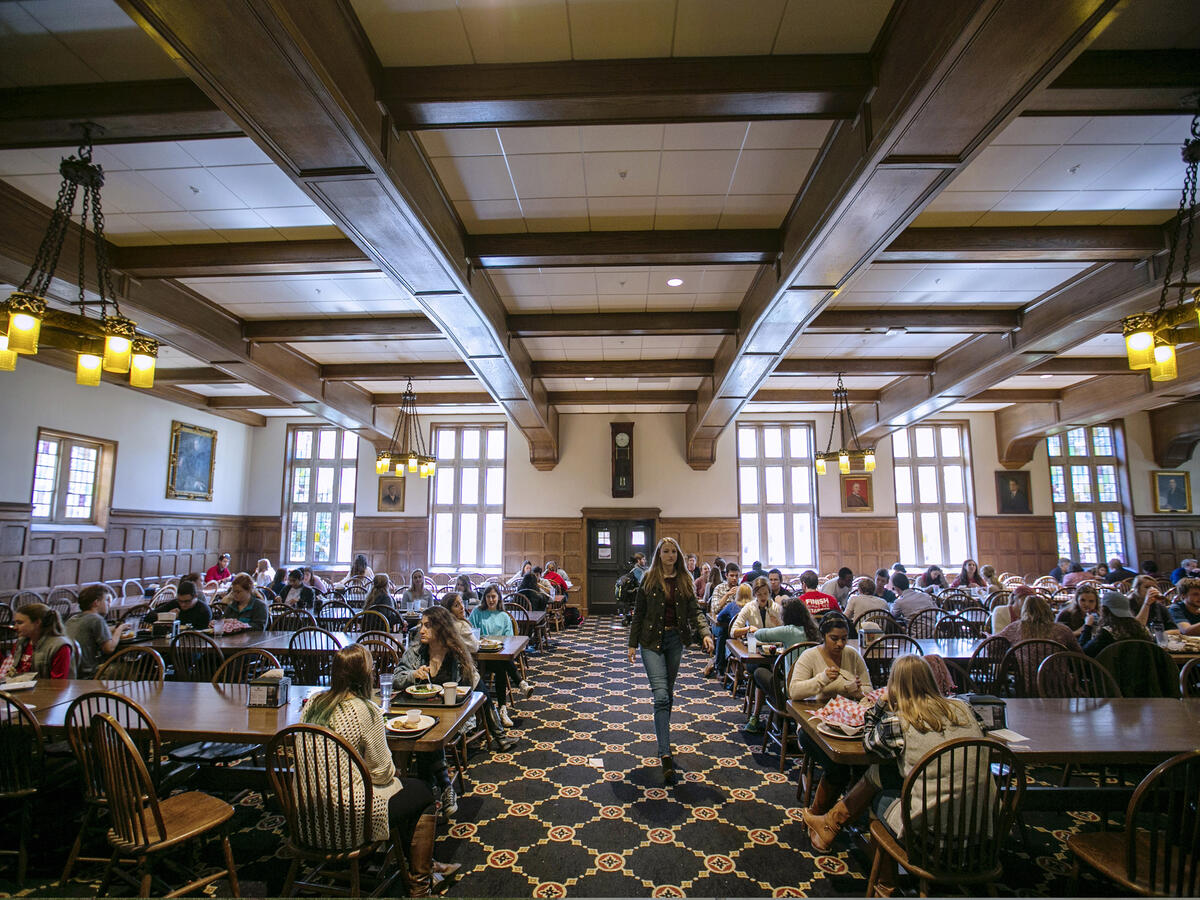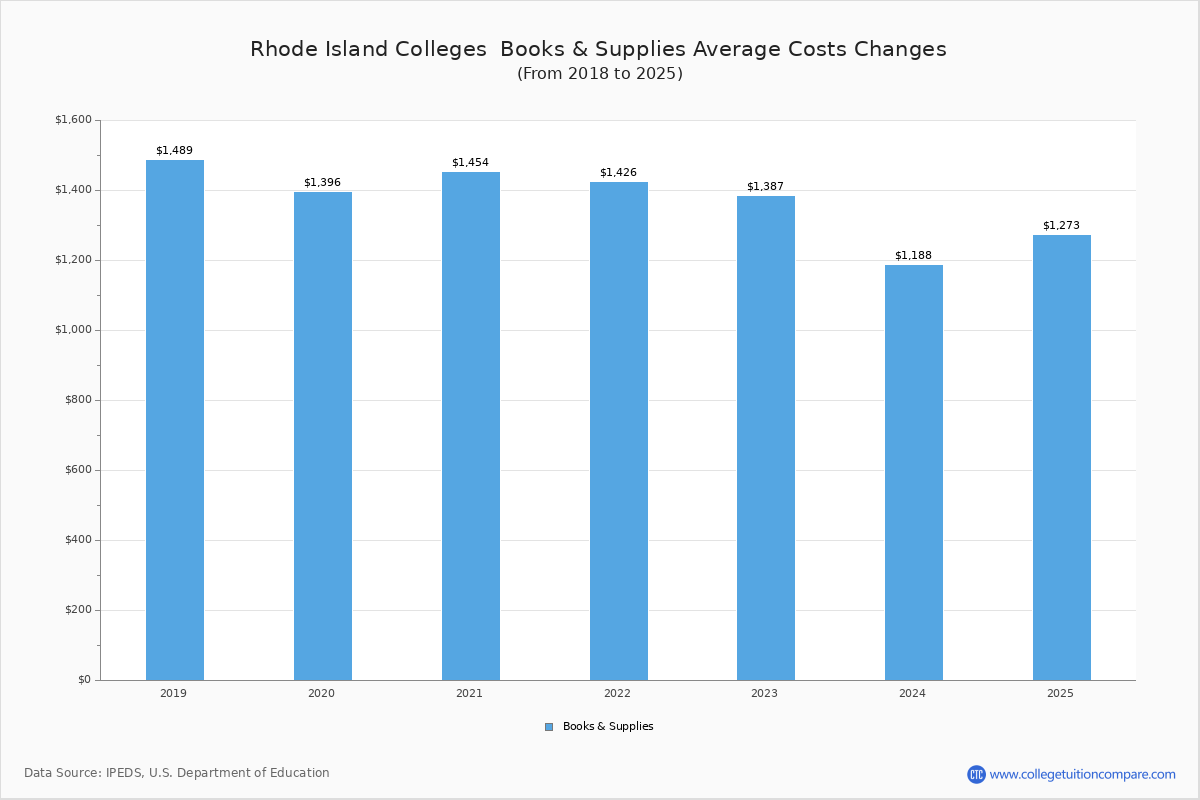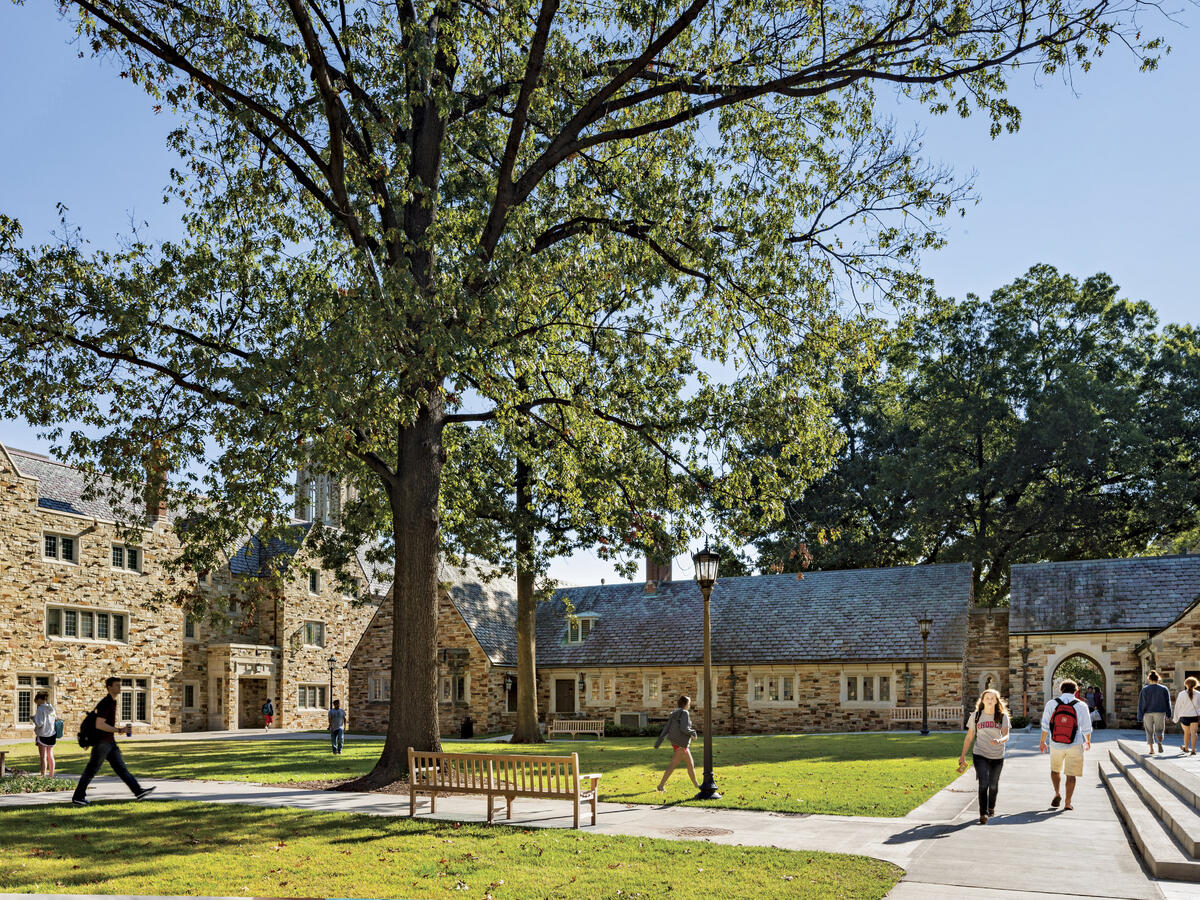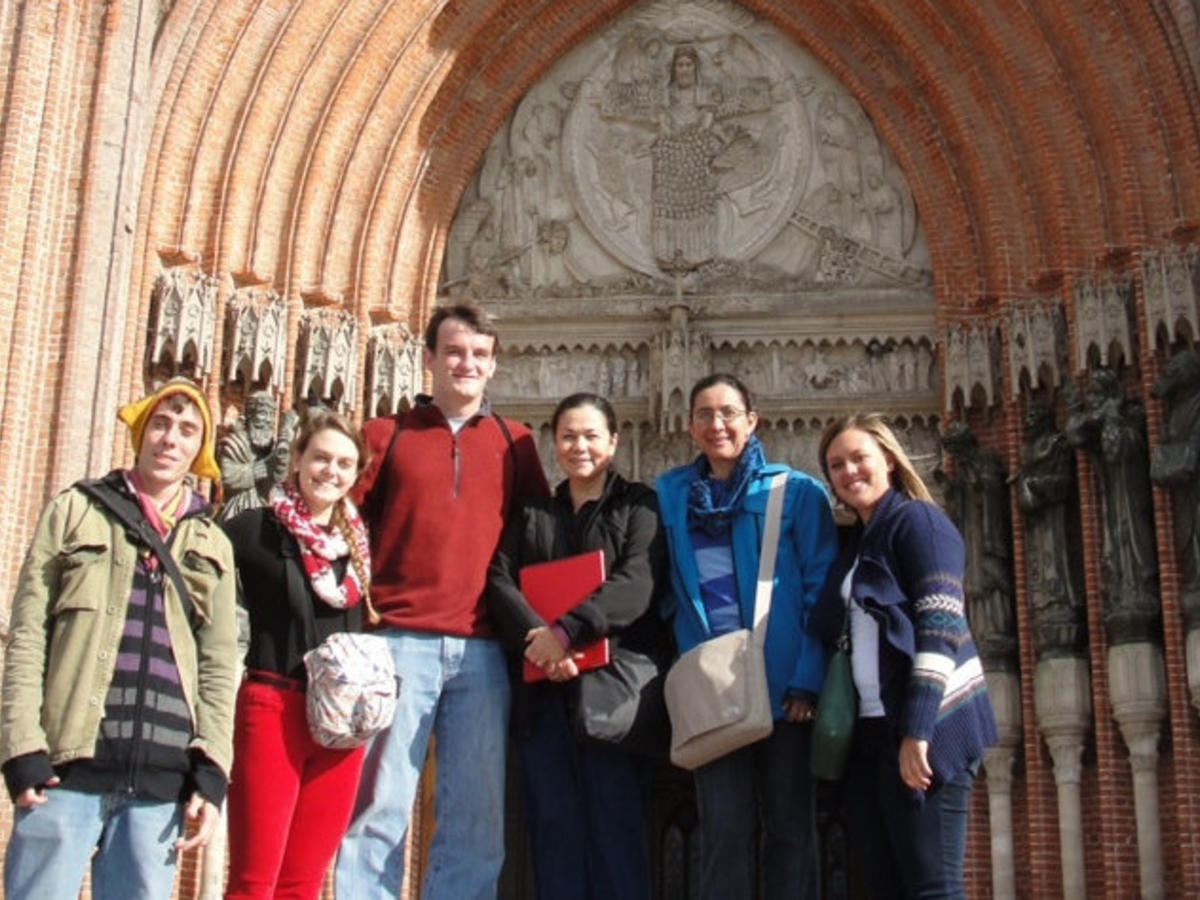Coming to the cost of attendance, students need to understand that the tuition fee is just a single aspect of the expenses that come under the overall cost of attending the university. They will be required to plan for various other expenses associated with the cost of attendance, including lodging, dining, textbooks, supplies, and the cost of living, among other things. The total tuition and fees for students attending Rhodes College come out to be around $49,198 per year. Apart from that, they should also pay an average amount of $1,125 toward books and supplies, $11,631 for room and boarding charges, and $2,619 toward other expenses in a year.
Hence, based on this information, the overall cost of attending the college adds up to around $64,573 per year. At the current published rates, an estimated total tuition, fees and living expense price for a 4 year bachelor's degree at Rhodes College is $258,292 for students graduating in normal time. This methodology for estimating the 4 year cost is a straight multiple of the most recent reported annual total cost and does not factor in tuition increases during the time you're in school. It also assumes you receive no grant or scholarship aid and pay the full list price. 92% of enrolled undergraduate students have received grants or scholarship aid and the average grant amount is $28,874. After receiving the financial aid, the net price is $37,596 including tuition, fees, books & supplies costs, and living costs.
Average net price is generated by subtracting the average amount of federal, state or local government, or institutional grant and scholarship aid from the total cost of attendance. Total cost of attendance is the sum of published tuition and required fees (lower of in-district or in-state), books and supplies and the weighted average room and board and other expenses. The latest data we have for Rhodes College's annual average net costs are from 2018.
These costs and and the average Tennessee schools include tuition, fees, living expenses, books, and fees minus the average grants and scholarships for federal financial aid recipients. Rhodes College is accredited by the Southern Association of Colleges and Schools Commission on Colleges to award bachelor's and master's degrees. The college has an average student retention rate of 92% which indicates student satisfaction. The tuition and fees at Rhode is one of the lowest among the national liberal arts colleges in the U.S. Below we've mapped out the tuition and fees that will help you understand how much you will pay for Rhodes College.
We've also included financial aid information to help you pay for college. If you'd like to get a personal estimated cost of attendance based on your situation, use our free cost calculator. The estimation excludes the book, supplies, and living costs before receiving any financial aid. See the other tabs for estimating 4-year total costs of attendance and after financial aid.
The next table shows the estimated 4-years tuition & fees for the next 5 admission years. The estimation is based on 4-years changes in tuition & fees at the school. 92% of the enrolled undergraduate students have received grant or scholarships and the average aid amount is $28,874 at Rhodes College. The school has a total enrollment of 2,036 and student to faculty ratio is 10 to 1 (10.00%).
The net price shown is the total cost of attendance, including tuition, fees and room and board, less any gift aid your child receives. Gift aid includes grants, scholarships and any other money that does not need to be earned through work or repaid. Projected college costs assume a 2.55% annual increase in costs. The "Cost of Attendance" is the total amount of money the average student has to pay, WITHOUT any financial aid, to attend a particular school. It includes not just Rhodes College tuition and fees, but also room, board, textbooks, and personal expenses.
The second consideration after understanding the cost of college is determining how to finance it. Some students are fortunate enough to have some form of family financial assistance, but student loans end up financing a significant portion of higher education in the U.S. 41% of Rhodes College students receive U.S. Federal Student Loans with an average annual Federal Loan aid amount of $5,158. CollegeCalc has estimated typical coverage of the annual in-state tuition and living expenses of $64,573. Breakdown is based on average grant aid and federal loan aid which will vary based on your family income.
The total costs of attendance including tuition, fees, books & supplies costs, and living costs have increased 35.65% from the year 2011 ($49,001) where the current year costs are $66,470 at Rhodes College. The undergraduate tuition & fees has raised from $36,464 to $50,910 . The graduate school tuition & fees has raised from $36,464 to $50,910 . In order to lower the financial obstacles to studying abroad, Rhodes allows students to use their federal and institutional aid on any one of more than 300 Rhodes-affiliated semester-long study abroad programs. The college's Buckman Center for International Education maintains a list of affiliated programs that Rhodes students can attend for one semester with no additional tuition or fees. Students pay tuition, room, and board as normal to Rhodes, including any federal and institutional aid they normally receive, which covers their tuition, room, and board while on the program.
Additionally, the college maintains a list of exceptional programs that are available via a petition process. Approximately 96% of those attending Rhodes College receive financial aid. Make sure you apply to all grants and loans that you qualify for. You can also use our Scholarship Searchto help you pay for college. Net price is the average cost after financial aid for students receiving grant or scholarship aid, as reported by the college.
Last year, 92% of enrolled undergraduate students have received grants or scholarship aid. It includes any financial aid from the federal government, state, local, institute, and other sources known by the institution. The cost of tuition and fees at Rhodes is among the lowest of the national liberal arts colleges.
Still, we understand that financing a college education is a big task, and we are here to help. Most Rhodes students end up paying no more than the cost of a state school. The cost for tuition and fees at Rhodes is among the lowest of the national liberal arts colleges (U.S. News & World Report).
Still, we understand that financing a college education is a big task and we are here to help. We carefully consider every student's circumstances and do our best to help make it possible for every accepted student to attend. About one-third of Rhodes students go on to graduate or professional school. Rhodes is in the top 10% of all U.S. colleges for the percentage of students who earn Ph.D.s in the sciences and among the top five in the Southeast.
Rhodes is also a top 10 undergraduate source of psychology Ph.D.s. The acceptance rates of Rhodes alumni to law and business schools are around 95%, and the acceptance rate to medical schools is nearly twice the national average. The total cost of Rhodes College includes tuition and other common, material expenses, like textbooks and supplies, room and board, and meal costs, minus the average amount of financial aid and scholarships. The average annual cost for students at Rhodes College is $26077.
The dictionary definition of average annual cost covers expenses like tuition, books and fees, and other miscellaneous items. That's an important distinction from the total cost of attending Rhodes College. Tuition and fees cover the cost of attendance for one academic year, but don't cover room and board, which will be an additional cost you will incur if you decide to stay on campus.
Yet, a lot of students wind up having to pay under full tuition after getting financial aid along with other discounts. At Rhodes College, the estimated tuition and fees for candidates who have enrolled in undergraduate programs are $49,198 per year. Moreover, the applicants must also pay an amount of $11,631 towards room and boarding charges. In this way, for one year, the total cost for undergraduate students comes to around $64,573. As for the net cost for attending RC, the actual amount depends on the annual family income of the candidate.
The net price is nothing but the actual amount that a student is required to pay in a year. The net cost to be borne is typically higher for candidates whose family income is comparatively higher. So, it all essentially depends on the family income bracket of the student. For students with a family income below $30,000, the estimated net price is $16,870, while for the individuals who fall in the $30,001-$48,000 income bracket, the net cost is $16,061. On the other hand, an estimated net cost of $20,749 is charged for the $48,001-$75,000 income bracket, $26,626 for the $75,001-$110,000 income category, and $33,644 for an annual family income more than $110,000. Obviously this varies based on a number of factors - offsetting financial aid you receive, percentage of fee you pay upfront while enrolled and the interest rate on your loans.
We've modeled a sample student loan based on current Stafford loan rates to give you an approximate idea. The following table and chart illustrate the changes in the total cost of attendance for Rhodes College over the past 10 years. The COA has increased 35.65% for that period where the last year costs were $66,470. The total cost includes the tuition, fees, books & supplies, and living costs.
The total costs vary by student tuition rates (i.e. in-state or out-of-state) and living facility (i.e. staying on or off campus). You can use the following prices to estimate the annual cost of attendance and to familiarize yourself with the financial aid opportunities available to students who attend this school. If you have further questions about the financial aid policies at this college, you may want to contact a financial aid representative using the provided contact information.
High percentages or amounts of federal loans still isn't a great sign - again, you don't want to see students burdened with too much debt. Generally, schools with strong financial aid programs will have students with more federal loans than private loans. Aside from grants, the other major way to pay for college is with student loans.
Student loans aren't free sums of money - you borrow a certain amount to attend Rhodes College, and then pay it back with smaller monthly payments after you graduate. Still, if you do not plan on receiving financial aid, student loans and the like then the Rhodes College cost of attendance is the best indicator to consider. Depending on many factors including student and parent income and assets, the total cost of attendance may be less than the $64,573 published price if scholarship or grant aid is made available to you. The table shows the 4-years estimation of total costs of attendance . It includes the tuition & fees, books & supplies costs, room & board charges, and other living expenses.
Newsweek named Rhodes the #1 service-minded school in the U.S., and Washington Monthly named Rhodes the top college in the country for the number of hours committed to service by the student body. Rhodes' Kinney Program provides students with a direct connection to service and social-action opportunities in Memphis by cultivating relationships with about 100 local partners. Additionally, the Bonner Scholars Program offers scholarships to up to 15 students per class who have a strong commitment to change-based service. Rhodes also offers Summer Service Fellowships that award academic credit to students working full-time with Memphis community organizations and non-profits. Rhodes has grown into a nationally ranked liberal arts and sciences college.
Under the leadership of Dr. James Daughdrill and Dr. William E. Troutt , the college's physical expansion continued, and Rhodes now offers more than 50 majors, interdisciplinary majors, minors, and academic programs. Additionally, the school has built partnerships with numerous Memphis institutions to provide students with a network of research, service, and internships opportunities. In July 2017, Dr. Marjorie Hass began her tenure as the 20th president of Rhodes College, and is the college's first female president. The full cost of attendance including tuition, room and board, books, travel, and other expenses, before Pell grants, scholarships, or merit aid. Weather your family is financially well-off or unaffluent, you might be eligible for some type of financial aid in the form of grant, loan or scholarship.
No matter what your situation is, you should first apply for Federal Student Aid . Colleges and universities use the information from your FAFSA and federal tax return to calculate your Expected Family Contribution . Your EFC determines how much financial aid you're eligible to receive. Average cost after financial aid for students receiving grant or scholarship aid, as reported by the college. Students who have neglected to pay their fees in full may be denied services such as grades, transcripts, financial aid, further registration, and graduation.
In addition to any outstanding tuition and fees, the student will be responsible for the costs of collection including, without limitation, interest, penalties, collection agency costs, court costs, and attorney fees. In the end, the answer comes down a determination if you will earn enough to comfortably pay back a student loan with your post graduation salary. In order to afford student loan payments and still meet all your other costs of living, it is recommended not to borrow more than you can pay back using 10% of your monthly income earned after graduation.
If you're considering attending Rhodes College, you need to carefully consider if it will be realistic to make the post graduation loan payments based on your expected salary. Rhodes is a national, four-year, private, coeducational, residential college committed to the liberal arts and sciences. Our highest priorities are intellectual engagement, service to others and honor among ourselves. The course is a central facet of Rhodes' Foundations Curriculum and can be seen as the college's take on the Great Books Program. An estimation of your total debt level upon graduation, calculated based on your net price over four years minus ($1) per year that you indicated your family can afford to pay out of pocket.
This figure is furher adjusted for estimated interest accruals during college and assumes you participate in a work-study program during the academic year. Rhodes is a residential college committed to excellence in the liberal arts and sciences. Our highest priorities are intellectual engagement, service to others, and honor among ourselves. Today, over 1,200 leading independent schools and colleges throughout North America offer the Plan. The Plan described on this site has been specifically designed for the needs of college students and parents.
It offers the unique benefit of refunding a portion of term tuition and fees when a student is forced to withdraw for medical reasons, subject to the terms and conditions of the policy. But one may not want to use tuition alone to calculate their cost of attendance. Doing so too often leads to projections that largely differ—for better or for worse—from initial expectations. To avoid unnecessary surprises, we offer information about the estimated cost of books, supplies, room and board and additional expenses.
Knowing what to expect will simplify the financial planning process and will allow students to prepare a realistic annual budget. The cost of a postsecondary education can vary greatly depending on the college or university one chooses to attend. To help you find the school that best matches your financial goals, we have compiled numerous facts about the pricing, enrollment and admission trends at more than 7,000 colleges and universities across the country. Other loans, or private loans, are the last resource students turn to when paying for college. They're the least preferable form of financial aid because they have higher interest rates and cost students the most money in the long run.
Altogether, this is great news - at Rhodes College, MORE students get financial aid, and each award size is HIGHER. This means students have to rely less on loans to pay for college and will likely graduate with less debt. We're focusing on grants and scholarships first because they're the most important forms of financial aid.


























No comments:
Post a Comment
Note: Only a member of this blog may post a comment.